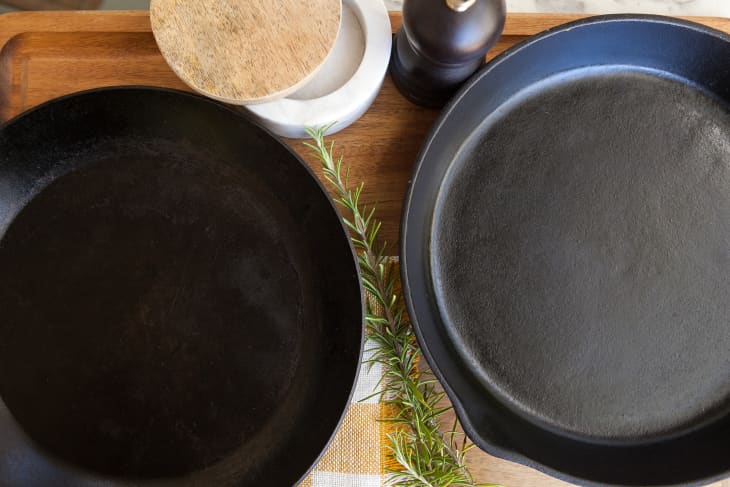What’s the Difference Between Cast Iron and Carbon Steel?
Cast iron and carbon steel have a ton in common. They’re both super-durable, become more nonstick the more you use them, and require special care to make sure they stay in tip-top shape. However, they also have their distinct characteristics, strengths, and weaknesses. Let’s go over ’em.
Material
Cast iron: Used for more than 1,000 years in construction, tool-making, and ornamentation, cast iron is pure iron alloyed with more than two percent carbon (which, ironically, means cast iron contains more carbon than carbon steel). Cast iron isn’t malleable, so it can’t be hammered into shape. It’s also a fairly brittle metal, making it susceptible to breakage.
Carbon steel: An alloy of iron and less than two percent carbon, carbon steel is a more modern invention, having developed alongside steel, stainless steel, and aluminum in the 18th and 19th centuries. It can be rolled, stamped, and forged into shape and is less brittle than cast iron.
Construction
Cast iron: Cast iron starts as a liquid metal that’s poured into a mold. This means cast iron pots and pans are made of a single piece of metal.
Carbon steel: Carbon steel cookware starts as a sheet of metal that, after being heated, can be shaped with a press machine or by hand and tools. Handles are forged separate from the body of the pan or wok and are attached with rivets.
Shape
Cast iron: Skillets, Dutch ovens, griddles, grill pans, loaf pans, muffin pans, and other specialty shapes.
Carbon steel: Skillets, crepe pans, paella pans, woks, and specialty cookware.
Heft
Cast iron: A Lodge 12-inch cast iron skillet weighs 8 pounds.
Carbon steel: A Lodge 12-inch carbon steel skillet weighs 4.1 pounds.
Heat Distribution and Retention
Cast iron: Heats relatively slowly, but retains heat like a champ, in large part because of its thickness.
Carbon steel: In comparison to cast iron, carbon steel is much more responsive to heat. It also cools faster than cast iron.
Tip: Contrary to popular myth, perfectly even heating is not a quality of either cast iron or carbon steel. Aluminum and copper are better conductors.
Care
The basics are the same for either pan: Clean with hot water, a scouring pad (copper or steel works well), and minimal or no soap. Dry thoroughly. Season with your choice of fat. Chefs and food writers recommend flaxseed oil, coconut oil, peanut oil, even lard — just not olive oil, which has a low smoke point.
Related: How to Clean a Carbon Steel Pan
Durability
They’ll both last generations with some TLC. In fact, if you find an old skillet in an antique store, make it your mission to resurrect it with a good scrub and a loving seasoning session.
Best Uses
Cast iron: Searing, pan-frying, roasting, baking, braising, and stewing (for enameled cast iron, since anything acidic like wine or tomatoes can strip the seasoning of traditional cast iron unless it’s highly seasoned).
Carbon steel: Searing, pan-frying, roasting, baking, stir-frying.
Worst Uses
Cast iron: Stir-fry. Since the pan gets hot and stays hot, you’ll need to hustle those barely cooked veggies out of the pan speedily or risk a limp, overcooked dinner.
Carbon steel: Any moist cooking method, like braising or stewing. Carbon steel loves fat and hates water.
Do you prefer cast iron or carbon steel? Let us know in the comments!
